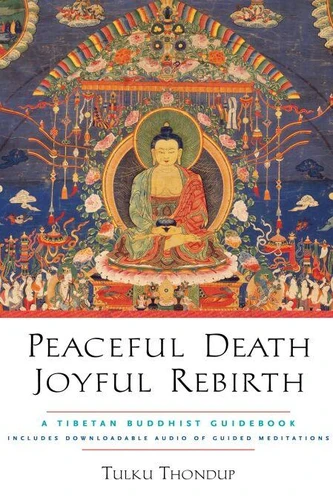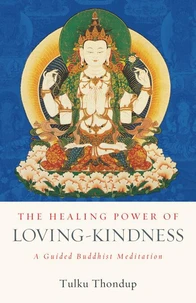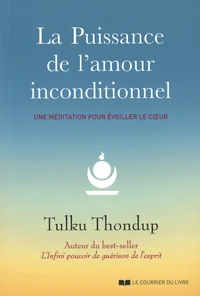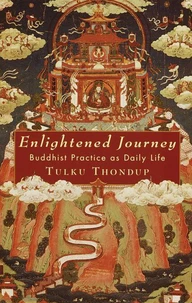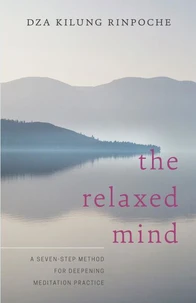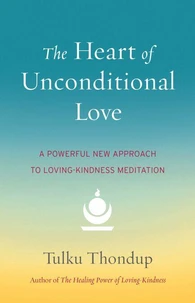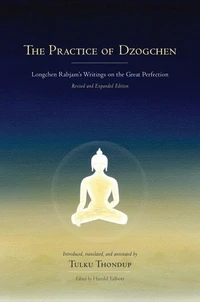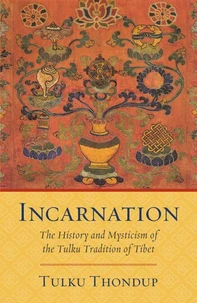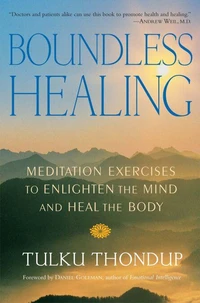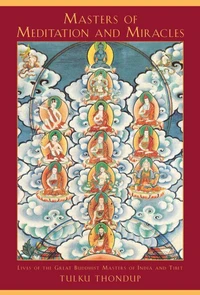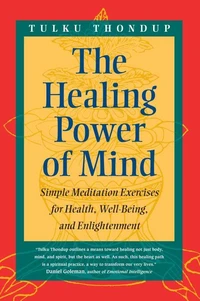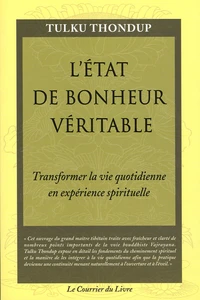Peaceful Death, Joyful Rebirth. A Tibetan Buddhist Guidebook
Par :Formats :
Disponible dans votre compte client Decitre ou Furet du Nord dès validation de votre commande. Le format ePub protégé est :
- Compatible avec une lecture sur My Vivlio (smartphone, tablette, ordinateur)
- Compatible avec une lecture sur liseuses Vivlio
- Pour les liseuses autres que Vivlio, vous devez utiliser le logiciel Adobe Digital Edition. Non compatible avec la lecture sur les liseuses Kindle, Remarkable et Sony
- Non compatible avec un achat hors France métropolitaine
 , qui est-ce ?
, qui est-ce ?Notre partenaire de plateforme de lecture numérique où vous retrouverez l'ensemble de vos ebooks gratuitement
Pour en savoir plus sur nos ebooks, consultez notre aide en ligne ici
- Nombre de pages352
- FormatePub
- ISBN0-8348-2498-1
- EAN9780834824980
- Date de parution12/12/2006
- Protection num.Adobe DRM
- Taille2 Mo
- Infos supplémentairesepub
- ÉditeurShambhala
Résumé
The author of The Healing Power of Mind draws on Buddhist scripture, firsthand accounts, and other sources to present an overview of Tibetan Buddhist teachings on facing death with openness and insightBuddhism teaches that death can be a springboard to enlightenment-yet for all but the most advanced meditators, it will be the gateway to countless future lives of suffering in samsara. Tulku Thondup wrote this guide to help us heal our fear and confusion about death and strengthen our practice in anticipation of this transition, and to help us realize the enlightened goal of ultimate peace and joy-not only for death and rebirth, but for this very lifetime.
In simple language, he distills a vast range of sources, including scriptures, classic commentaries, oral teachings, and firsthand accounts. The book includes: . An overview of the dying process, the after-death bardo states, and teachings on why, where, and how we take rebirth. Accounts by Tibetan "near-death experiencers" (delogs), who returned from death with amazing reports of their visions .
Ways to train our minds during life, so that at death, all the phenomena before us will arise as a world of peace, joy, and enlightenment . Simple meditations, prayers, and rituals to benefit the dead and dying . Advice for caregivers, helpers, and survivors of the dyingBy becoming intimate with this practice while we're alive, we can alleviate our fear of death, improve our appreciation of this life, and prepare for death in a very practical way, while planting the seeds for rebirth in the Pure Land.
In simple language, he distills a vast range of sources, including scriptures, classic commentaries, oral teachings, and firsthand accounts. The book includes: . An overview of the dying process, the after-death bardo states, and teachings on why, where, and how we take rebirth. Accounts by Tibetan "near-death experiencers" (delogs), who returned from death with amazing reports of their visions .
Ways to train our minds during life, so that at death, all the phenomena before us will arise as a world of peace, joy, and enlightenment . Simple meditations, prayers, and rituals to benefit the dead and dying . Advice for caregivers, helpers, and survivors of the dyingBy becoming intimate with this practice while we're alive, we can alleviate our fear of death, improve our appreciation of this life, and prepare for death in a very practical way, while planting the seeds for rebirth in the Pure Land.
The author of The Healing Power of Mind draws on Buddhist scripture, firsthand accounts, and other sources to present an overview of Tibetan Buddhist teachings on facing death with openness and insightBuddhism teaches that death can be a springboard to enlightenment-yet for all but the most advanced meditators, it will be the gateway to countless future lives of suffering in samsara. Tulku Thondup wrote this guide to help us heal our fear and confusion about death and strengthen our practice in anticipation of this transition, and to help us realize the enlightened goal of ultimate peace and joy-not only for death and rebirth, but for this very lifetime.
In simple language, he distills a vast range of sources, including scriptures, classic commentaries, oral teachings, and firsthand accounts. The book includes: . An overview of the dying process, the after-death bardo states, and teachings on why, where, and how we take rebirth. Accounts by Tibetan "near-death experiencers" (delogs), who returned from death with amazing reports of their visions .
Ways to train our minds during life, so that at death, all the phenomena before us will arise as a world of peace, joy, and enlightenment . Simple meditations, prayers, and rituals to benefit the dead and dying . Advice for caregivers, helpers, and survivors of the dyingBy becoming intimate with this practice while we're alive, we can alleviate our fear of death, improve our appreciation of this life, and prepare for death in a very practical way, while planting the seeds for rebirth in the Pure Land.
In simple language, he distills a vast range of sources, including scriptures, classic commentaries, oral teachings, and firsthand accounts. The book includes: . An overview of the dying process, the after-death bardo states, and teachings on why, where, and how we take rebirth. Accounts by Tibetan "near-death experiencers" (delogs), who returned from death with amazing reports of their visions .
Ways to train our minds during life, so that at death, all the phenomena before us will arise as a world of peace, joy, and enlightenment . Simple meditations, prayers, and rituals to benefit the dead and dying . Advice for caregivers, helpers, and survivors of the dyingBy becoming intimate with this practice while we're alive, we can alleviate our fear of death, improve our appreciation of this life, and prepare for death in a very practical way, while planting the seeds for rebirth in the Pure Land.

